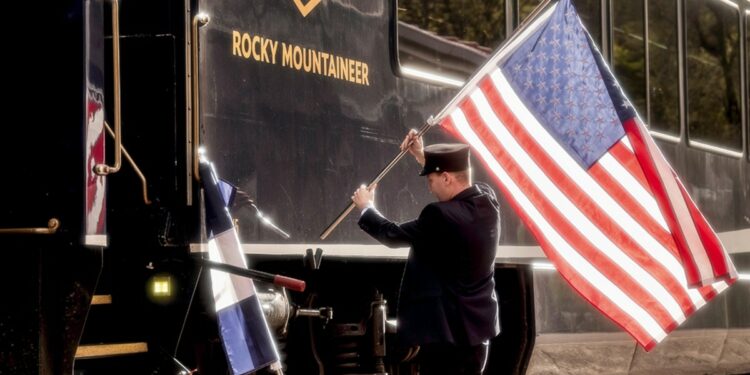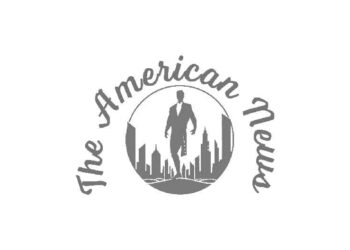While some resemble elephantine penises, others are like dizzying whirls of meringue rising from the desert. The one to my left looks uncannily like a piece of fried chicken.
IтАЩm perched on a boulder in UtahтАЩs Arches National Park тАФ a seemingly infinite expanse of red-orange sandstone arches and rocks of varying shapes and sizes. A visit to the park тАФ home to the densest concentration of natural stone arches in the world тАФ is part of the тАШRockies to the Red RocksтАЩ itinerary on the Rocky Mountaineer train, a route launched in 2021. It departs from the nearby city of Moab and clicks and clacks its way through hulking canyons, ghost towns and wine regions, ending up in Denver, Colorado. IтАЩm excited for all that awaits me, but as far as passionate biologist and park guide Chris Tull is concerned, it doesnтАЩt get much better than where IтАЩm standing right now.
тАЬItтАЩs a bit like youтАЩve died and woken up in Wonderland,тАЭ he says, gesturing to the almost-spectral landscape around us. тАЬThe depth, complexity and nuance of Arches keeps you coming back over and over again.тАЭ
Nature defies gravity in Utah’s Arches National Park.
Photograph by Rebecca Stumpf
The 120sq-mile park is a labyrinth of paths and lookout points and contains more than 2,000 arches; Chris mentions heтАЩs visited the park hundreds of times but has only seen 190 of them. On our morning trip, we spot a good four or five arches and rock formations. ThereтАЩs a hoodoo (rock pillar) shaped like the Egyptian queen Nefertiti, which tops a weathered mountain that has lasagne-like layers of sedimentary rock in the parkтАЩs signature colour of red. And thereтАЩs Delicate Arch, a 52ft-tall, wishbone-shaped landmark that features on every licence plate around the state. ItтАЩs backdropped by the La Sal Mountains on the distant horizon, reminiscent of the distinctive painting style of landscape artist and TV presenter Bob Ross.
тАЬThis place dates back to Jurassic times,тАЭ Chris tells me, adjusting his Ray-Bans. тАЬTen thousand years ago, this land wouldтАЩve been a coniferous pine forest; you couldnтАЩt see the desert for the trees. Woolly mammoths, cave bears, giant sloths тАФ they wouldтАЩve been roaming all over here.тАЭ
As morning slides into afternoon, the clouds start to clear, revealing the snowcapped peaks of La Sal. I take one last look at the phallus and the fried chicken before heading towards Moab тАФ IтАЩve a train to catch.
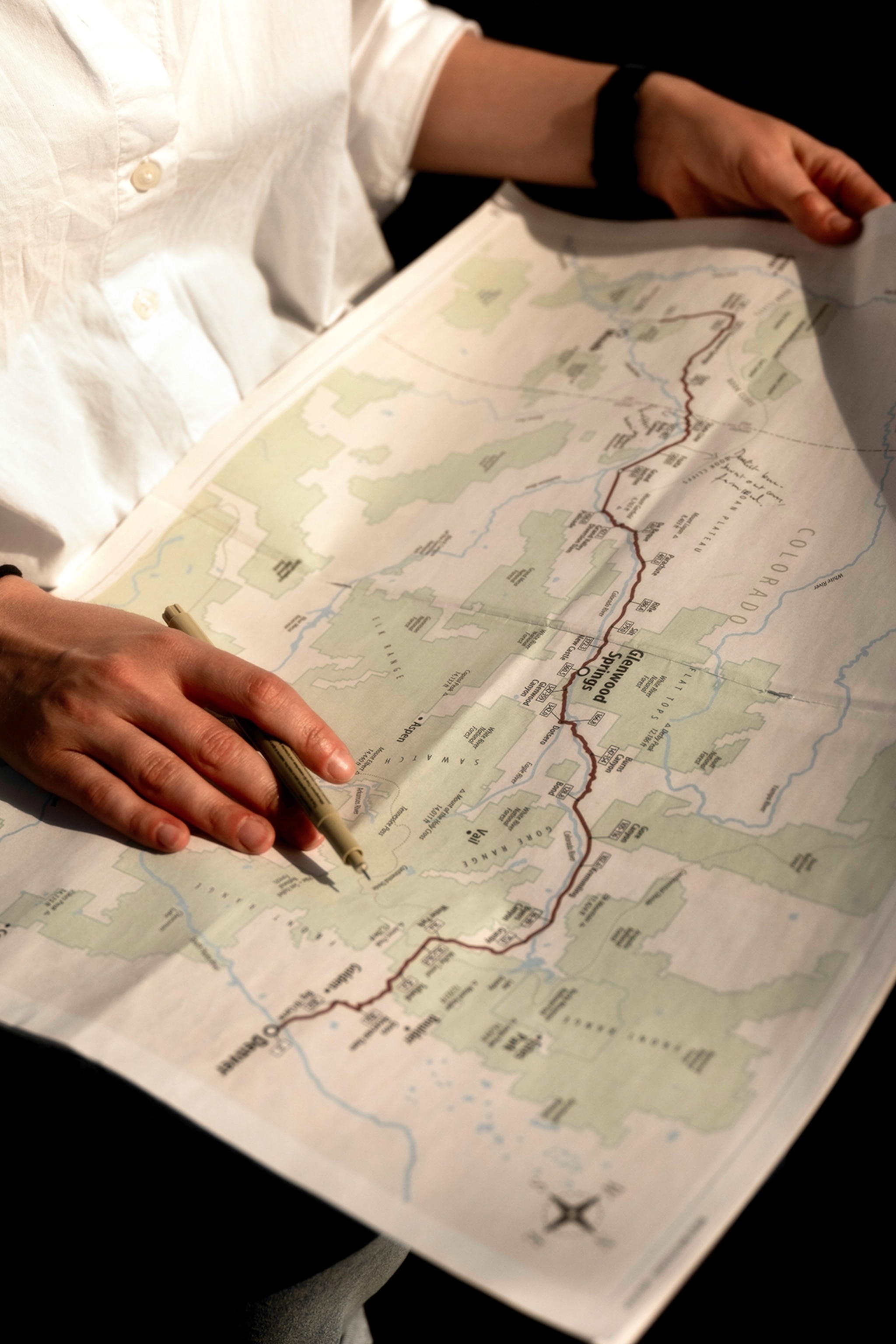
Rocky Mountaineer runs from Moab to Denver.
Photograph by Rebecca Stumpf
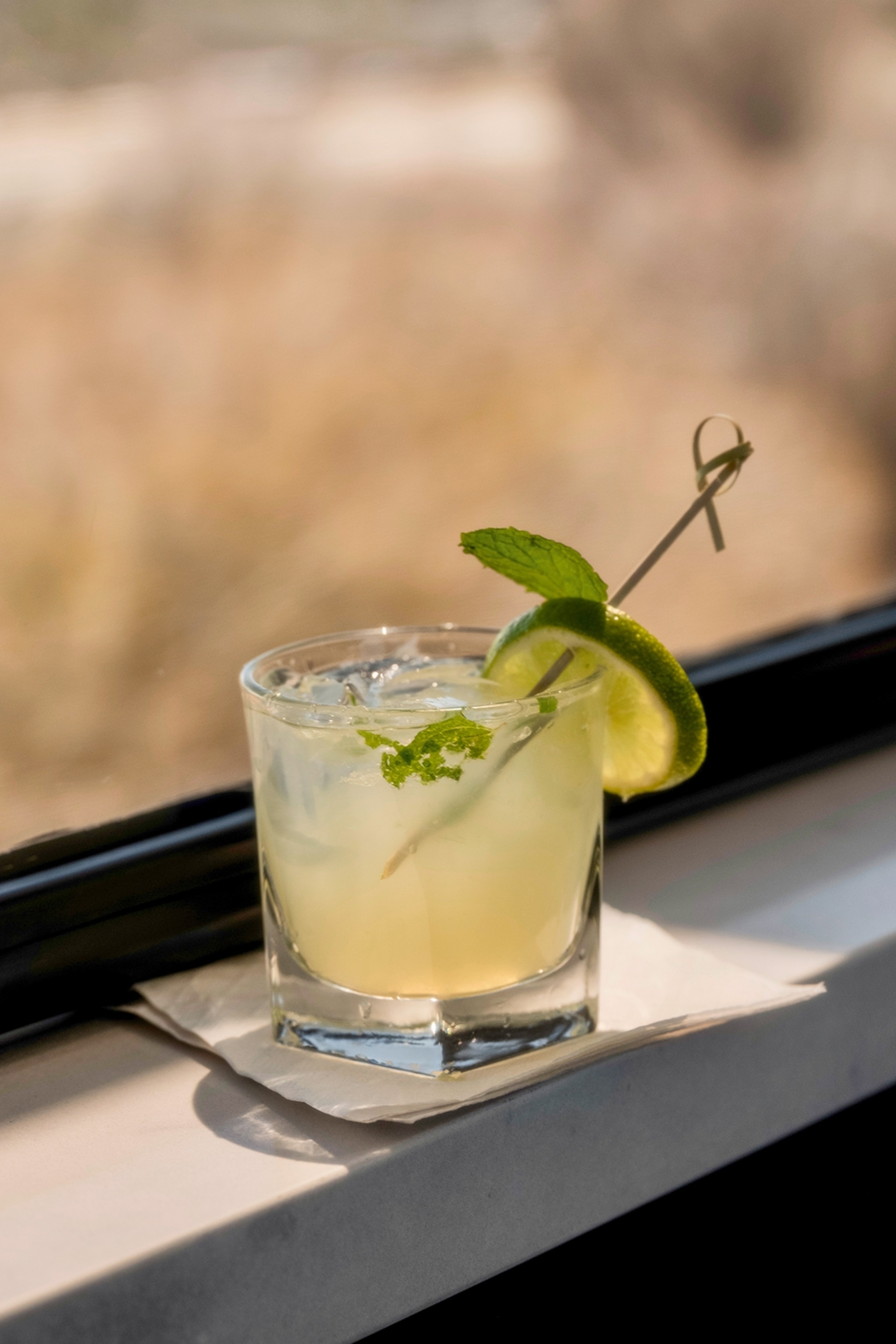
Expect to sip cocktails such as this vodka gimlet in the trainтАЩs bar.
Photograph by Rebecca Stumpf
Heading east
One hour later, I sink into a marshmallow-soft chair in the Rocky MountaineerтАЩs glass-domed lounge car as the train pulls away from the station. For the next day and a half, weтАЩll be chuntering eastward approximately 350 miles, following the serpentine Colorado River upstream. The┬аred┬аsandstone rocks of Utah will morph, mile by mile, into the snow-clad, alpine landscapes of Colorado, the most mountainous state in the country.
We chug along the Cane Creek Subdivision, a sweep of crimson canyons and desolate desert. Leaving my fellow passengers chatting in their seats, I head to the bar. Here I meet 75-year-old host Cheryl Yeats, whoтАЩs worked on board since the route launched. She pinballs around the bar as she fixes me her signature vodka gimlet. тАЬIтАЩve been to 48 out of 50 states, but thereтАЩs nothing quite like the Rocky route,тАЭ she says as we pass through swathes of golden-brown hinterland towards the Utah-Colorado border. тАЬWhen youтАЩre approaching Denver, for example, itтАЩs almost like youтАЩre going into Emerald City, the views are just beautiful.тАЭ
As I take my first sip of the gimlet, a voice comes over the PA system. тАЬLadies and gentlemen, weтАЩre now approaching Ruby Canyon,тАЭ says London native Jessica┬аByrne, the┬аmain train guide. Within seconds weтАЩre enveloped by prodigious, truffle-like sandstone cliffs. The canyon stretches 25 miles across the state border but, IтАЩm told, the cliffs are only visible from the train or by rafting along the canyonтАЩs river. Sure enough, as we pass a set of colossal, protruding rocks, a solo rafter appears, dwarfed by his surroundings.
Some miles into Colorado, we pass through Palisade, home to the stateтАЩs main wine region, where lush vineyards lie beneath towering cliffs, strung along desert valleys. As┬аwe head further east, the 11,000ft-high Grand Mesa, the┬аworldтАЩs largest flat-topped mountain, slowly comes into view, like a city rising out of the ground. A┬аfew miles later, winding north, we catch a glimpse of the town of Parachute, where, in 1904, the infamous outlaw Kid Curry held a conductor at gunpoint after escaping from prison.
ItтАЩs one of the final sights of the day. At Glenwood Springs, in the foothills of the Rockies, we disembark and check into a hotel for the night. Drawing the curtains, I┬аspot our train resting at the station, and, in my head, can still hear it clicking and clacking along the tracks.
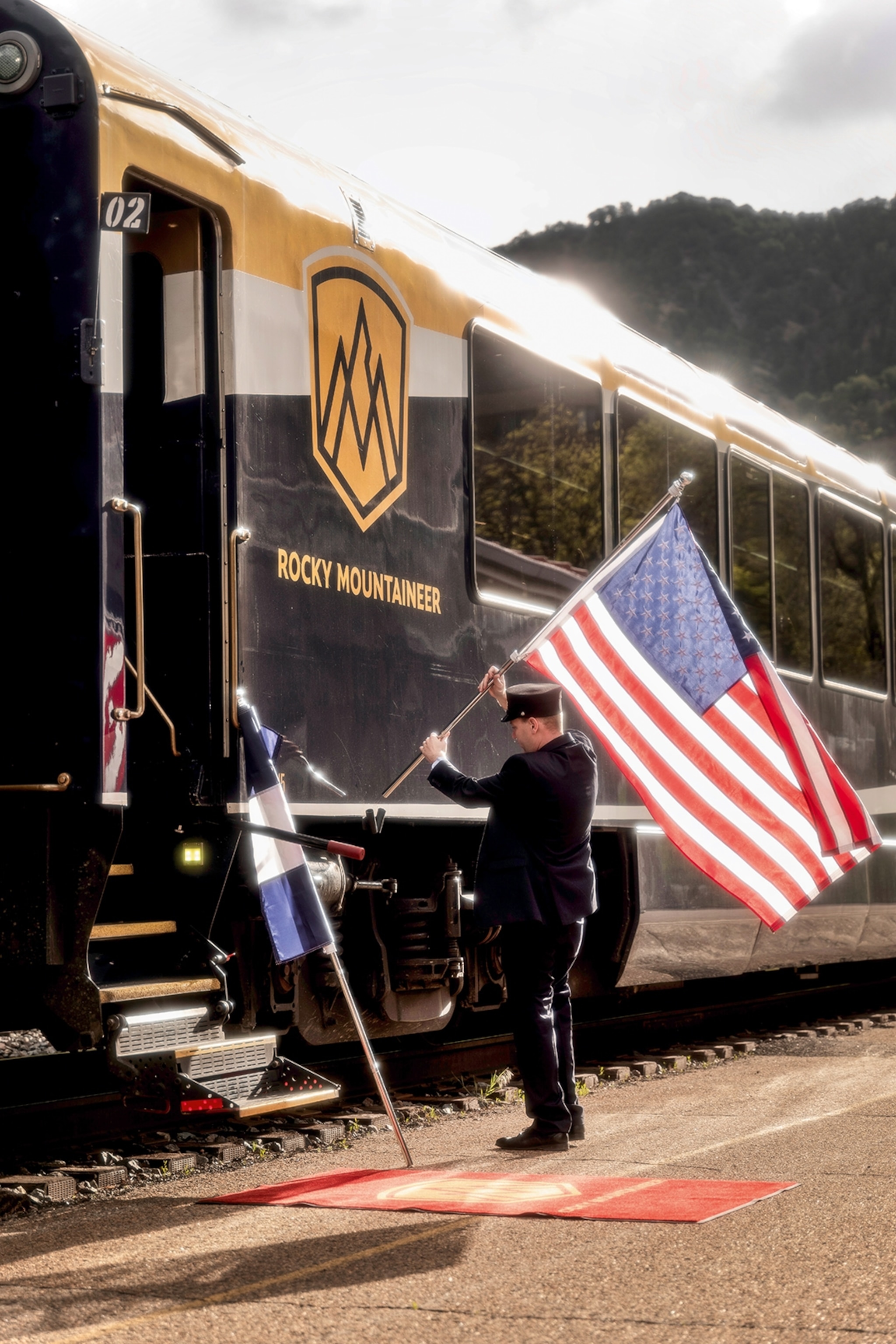
In true American fashion, flags are waved to celebrate the trainтАЩs arrival and departure.
Photograph by Rebecca Stumpf
Pastures new
тАЬThis is some of the most beautiful scenery in the entire country,тАЭ says Jessica as we travel through Glenwood Canyon, just a few minutes into our journey the following morning. The 1,300ft-high canyon walls, clothed in oak brush trees, tower over our train.
By breakfast, the landscape rolling by is worlds away from the red hues of Utah. The cliffs, a mix of sandstone and Cambrian rock, are cloaked with spruce and chartreuse shrubs. In the distance are the snowy peaks of the Rockies, beneath an isolated group of clouds. The closer we get to Boulder, more and more mounds of snow appear on the ground. WeтАЩre on the home run now, passing through small towns and ski resorts. ItтАЩs hard to believe weтАЩve gone from Mars-like scenes to this in just over 24 hours.
As the train make its final approach into Denver, I catch the Emerald City-like views Cheryl mentioned тАФ it looks straight out of The Wizard of Oz. In the gangway I bump into Thomas Frantz, on-board maintenance technician and self-proclaimed train doctor, who helped build some of the cars for the Canadian Rocky Mountaineer. The Denver native oversees everything from getting spare parts to making sure the engineтАЩs working properly.
тАЬIтАЩve rode this journey 300 times. I know every telephone pole, every boulder, every rock, and IтАЩm still not tired of it,тАЭ he says, before a message coming in on one the three walkie talkies attached to his belt interrupts him. тАЬThis┬аstuff never gets old, itтАЩs too gorgeous out here.тАЭ
His words echo in my head as I clamber down onto the platform in Denver. ItтАЩs tempting to get straight back on board, and relive every telephone pole, every boulder and every rock all over again.
Published in the March 2025 issue of National Geographic Traveller (UK).
To subscribe to┬аNational Geographic Traveller┬а(UK) magazine click here. (Available in select countries only).
Source link : http://www.bing.com/news/apiclick.aspx?ref=FexRss&aid=&tid=67af2ed2ec38461e95a12d3910230510&url=https%3A%2F%2Fwww.nationalgeographic.com%2Ftravel%2Farticle%2Ftravel-on-the-rocky-mountaineer-us-train&c=13862654392278405678&mkt=en-us
Author :
Publish date : 2025-02-13 00:00:00
Copyright for syndicated content belongs to the linked Source.

